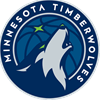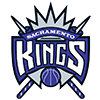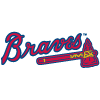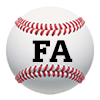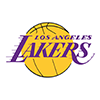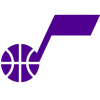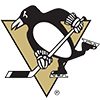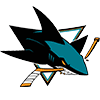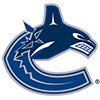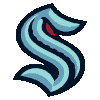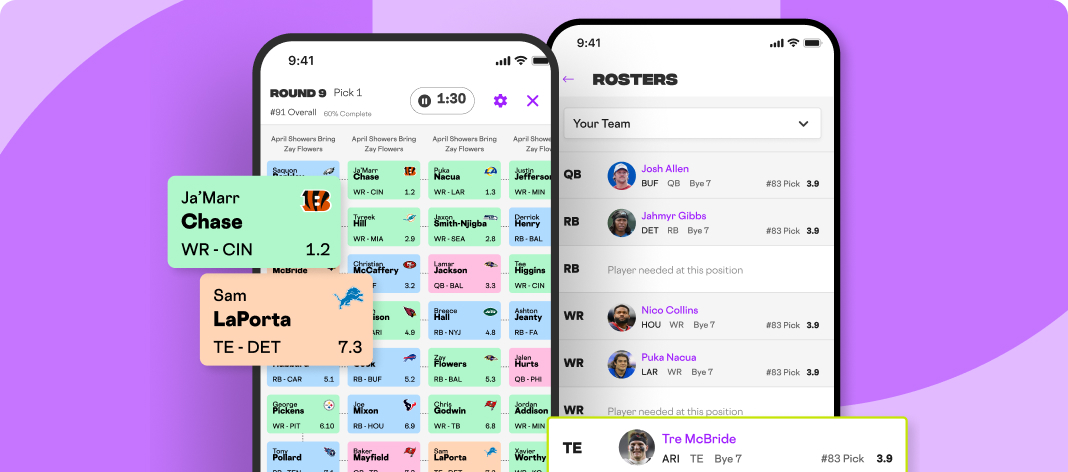While we obviously don't know exactly what the plan will be when/if baseball returns, we're at the point that a few logical assumptions can be made, with associated adjustments in player expectation:
1. The schedule will be abbreviated and likely condensed, with fewer off days and some doubleheaders.
2. Games will probably not be contested in standard MLB parks, though it remains to be seen where play will occur and whether teams will have a home base.
3. A strong likelihood of a universal designated hitter.
4. No formal minor-league season, though some sort of arrangement could exist where limited farm players and perhaps rehabbing MLB players compete in official or unofficial games.
Let's go through each assumption, with a look at some fantasy repercussions.
Abbreviated and Condensed Schedule
There's a lot of discussion on this topic, since there's no practical way a full 162-game season can be played. Many have espoused the potential virtues of sixth starter/swingman types such as Ross Stripling, Josh James and Austin Voth. Deploying dominant middle relievers in lieu of back-end starters is also a common notion. The other popular thought is to secure a top closer, maybe two, with the idea being free agency will afford fewer chances to pick up saves in season. Not to mention, middling closers on competitive teams could have a shorter leash. Personally, I'm in lockstep with all three. Chris Bassitt is my favorite swingman to draft, I like Kevin Ginkel as a middle relief target, and
While we obviously don't know exactly what the plan will be when/if baseball returns, we're at the point that a few logical assumptions can be made, with associated adjustments in player expectation:
1. The schedule will be abbreviated and likely condensed, with fewer off days and some doubleheaders.
2. Games will probably not be contested in standard MLB parks, though it remains to be seen where play will occur and whether teams will have a home base.
3. A strong likelihood of a universal designated hitter.
4. No formal minor-league season, though some sort of arrangement could exist where limited farm players and perhaps rehabbing MLB players compete in official or unofficial games.
Let's go through each assumption, with a look at some fantasy repercussions.
Abbreviated and Condensed Schedule
There's a lot of discussion on this topic, since there's no practical way a full 162-game season can be played. Many have espoused the potential virtues of sixth starter/swingman types such as Ross Stripling, Josh James and Austin Voth. Deploying dominant middle relievers in lieu of back-end starters is also a common notion. The other popular thought is to secure a top closer, maybe two, with the idea being free agency will afford fewer chances to pick up saves in season. Not to mention, middling closers on competitive teams could have a shorter leash. Personally, I'm in lockstep with all three. Chris Bassitt is my favorite swingman to draft, I like Kevin Ginkel as a middle relief target, and I'm willing to pay what's necessary to secure Kirby Yates as my closer. In AL-only play, I'll accept Roberto Osuna at a good price, but won't chase him, preferring to take my chances on Hansel Robles or Jose Leclerc. Admittedly they're not as safe but relative to the AL inventory, they're worth a shot.
The primary area I differ from the masses in this area is the supposition certain young arms will thrive since they won't be under as much of an innings constraint. The two most cited are Athletics teammates Jesus Luzardo and A.J. Puk, along with the Dodgers Julio Urias. Sure, they could benefit, but not to the extent many contend. It's not just about the number of innings, but also the frequency each will work. I simply do not envision either them an every-fifth-day workload, even if the accrued innings in that scenario are comparable to what they would have logged in a full campaign. For this reason, I'm doubling down on my Bassitt recommendation.
Non-Standard Venues
Despite New York Governor Andrew Cuomo expressing confidence games can be played in Yankee Stadium and Citi Field later this summer, the current logistics render this almost unimaginable. The most likely scenario encompasses satellite areas, with some combination of Florida, Arizona, Texas and maybe Southern California as the most plausible locales.
As such, players will lose any edge gained from their usual home park or alternately, not suffer from unfavorable conditions. Last week, I reviewed how hitters and pitchers should be neutralized performing out of their usual digs, however very few specific examples were shared. Here are some additional under-the-radar pitchers in a position to benefit or be hurt the most, with the caveat where they actually end up playing could mitigate the effect.
German Marquez and Jon Gray are the obvious names to thrive outside of their usual home. Last week I offered Matthew Boyd and Spencer Turnbull, as Comerica Park quietly boosts hitting. While it doesn't get talked about as much as its neighbor Camden Yards, Nationals Park has played as one of the top offensive venues in recent seasons. As such, the already stud trio of Max Scherzer, Stephen Strasburg and Patrick Corbin should leapfrog up a couple spots in your rankings. Anibal Sanchez, Joe Ross and the aforementioned Voth become more attractive as late-round plays. Unfortunately, the Orioles pitching staff is weak, but getting away from Camden Yards could help John Means fight off his anticipated regression along with availing Alex Cobb truthers a reason to cling to "this is the year" one last time.
As alluded to last week, on paper leaving Citi Field is detrimental for Jacob deGrom and teammates Marcus Stroman, Rick Porcello and Steven Matz. The latter three are especially stung as they lined up to be sneaky spot starters in formats friendly to pitcher streaming. The Mariners staff takes the next biggest hit, but other than a dart on Marco Gonzales or Taijuan Walker, there isn't much to see here. Tampa hurlers could be affected, though there is a chance they'd still work in Tropicana Field so don't discount them too much. The Rays are also in great shape to manage the innings of their staff in this unique environment, since they've essentially been serendipitously rehearsing for it for a couple years now.
There's a handful of teams perceived to be in parks that skew one way or the other, but in fact the impact would be minimal. Don't sweat Padres, Marlins and Angels, the adjustment isn't worth the worry. On the flip side, Brewers, White Sox, Yankees, Reds and Red Sox arms won't be aided as much as some may intuit.
Obviously, this is actionable only if pods are set up in Florida and Arizona, but pitching should be favored in the Sunshine State with hitting dominating the desert. Be careful, as some are warning the humidity in Florida is the reason offense will lag behind Arizona, but this isn't the case. Fly balls actually travel further in humid air as the water molecules displace the heavier nitrogen. Even so, factors such as higher elevation and higher temperatures give the edge to Arizona in terms of batters. In addition, unless all the baseballs are stored in a humidor, they're likely to exhibit a similar bouncy behavior as they did pre-humidor in Chase Field, significantly boosting offense.
Universal Designated Hitters
Last week, it was suggested J.D. Davis benefits if senior circuit teams adopt the designated hitter (DH). Davis' teammate Yoenis Cespedes is also a potential beneficiary. Here's a team-by-team rundown of hitters with the most to gain via universal DH.
| Team | Players Gaining Playing Time | Main DH |
| Arizona Diamondbacks | Jake Lamb | Lamb |
| Atlanta Braves | Austin Riley | Riley |
| Chicago Cubs | Steven Souza, Albert Almora | Kyle Schwarber |
| Cincinnati Reds | Aristides Aquino, Josh VanMeter | Aquino |
| Colorado Rockies | Sam Hilliard, Garrett Hampson | Daniel Murphy |
| Los Angeles Dodgers | A.J. Pollock, Chris Taylor | Joc Pederson |
| Miami Marlins | Jon Berti, Garrett Cooper, Harold Ramirez | Cooper, Ramirez |
| Milwaukee Brewers | Avisail Garcia, Ben Gamel | Ryan Braun |
| New York Mets | J.D. Davis, Yoenis Cespedes | Davis |
| Philadelphia Phillies | Roman Quinn, Jay Bruce, Neil Walker | Bruce |
| Pittsburgh Pirates | Jose Osuna, Erik Gonzalez | Osuna |
| St. Louis Cardinals | Matt Carpenter, Dylan Carlson | Carpenter |
| San Diego Padres | Josh Naylor, Franchy Cordero, Brian Dozier | Dozier, Naylor |
| San Francisco Giants | Wilmer Flores, Hunter Pence | Flores, Pence |
| Washington Nationals | Asdrubal Cabrera, Howie Kendrick, Michael Taylor | Kendrick |
The wild card in this scenario is Yasiel Puig, recently rumored to be headed to the Giants. If Puig signs with an NL club, he immediately becomes the player most favored via universal DH. Of those listed, Lamb, Riley, Pollock, Bruce, Carpenter and Kendrick would all become mixed-league worthy. Those becoming sneaky plays in NL-only include Souza, VanMeter, Taylor, Garcia, Quinn, Osuna and Naylor. Most of the rest are already on the radar in NL-only formats.
The other repercussion with the universal DH is NL pitchers no longer enjoy the luxury of facing their brethren. So, obviously, NL pitchers should be downgraded, right? Not so fast!
The data everyone will display is similar to the following three-year totals:
ERA | WHIP | K/9 | BB/9 | HR/9 | |
| NL | 4.25 | 1.32 | 8.63 | 3.33 | 1.23 |
| AL | 4.42 | 1.33 | 8.53 | 3.23 | 1.33 |
BA | OBP | SLG | |
| AL DH | 0.247 | 0.324 | 0.442 |
| NL Pitchers | 0.122 | 0.153 | 0.158 |
Both scream downgrade National League pitchers. However, there is another set of number integral to the algebra. Specifically, since teams will likely be playing a mixture of the two leagues, the strength of the non-pitcher element of the two leagues needs to be considered. To wit, again a three-year average:
BA | OBP | SLG | |
| NL | 0.258 | 0.330 | 0.433 |
| AL | 0.253 | 0.321 | 0.429 |
The dirty little secret no one realizes is that when you take out the pitcher at-bats, National League lineups are more productive than their junior circuit counterparts, although this doesn't account for the domino effect of how batters hitting low in the NL order are pitched.
While we don't know the aggregate production of potential NL DHs, if they match the AL, NL offenses would become superior to those in the AL. Ergo, AL pitchers will also be facing better lineups than usual as part of any realignment, so the relative difference between AL and NL pitchers is actually more than suggested by the first two tables above.
It's possible to quantify the differences each league's pitchers will face and adjust expectations accordingly. However, since the distribution of teams in each playing pod is unclear, it's best to backburner the effort, since the strong chance of an unbalanced alignment adds another element to the equation. For now, the key is not to over-penalize NL pitchers since AL pitchers will also face a tougher aggregate lineup.
Lack of Minor-League Play
I'll be honest, this isn't my area of expertise. I can offer some general thoughts, but others are better suited to fill in the blanks with names.
Big picture, I expect prospects on teams looking to compete to benefit while those playing on second-division clubs are less likely to have their service time started. In addition, prospects needing to force their way onto a roster won't have that opportunity. For example, with only Brian Goodwin in his way, and the Angels having a puncher's chance at a wild-card berth, Jo Adell could be with the club from the jump. On the other hand, the Mariners have little reason to promote Jarred Kelenic, while Wander Franco probably won't get the chance to hit his way into the Rays lineup.
As an example of why others are more qualified to speak in this area, RotoWire's lead prospect analyst James Anderson made a great point in a recent interview, explaining teams nurturing young pitching will be faced with a conundrum. Do they start a prospect's service time clock in a non-competitive season, or risk curtailing development and failing to build up innings by having their stud arms work in whatever arrangement is set up in lieu of a minor-league season? The biggest names on second-division squads who could be affected are Tarik Skubal, Matt Manning and Casey Mize (Tigers), Edward Cabrera and Sixto Sanchez (Marlins) and Nate Pearson (Blue Jays). Rookie starting pitchers more likely to see action, since their teams are aiming to win and need help, are Forrest Whitley (Astros), Spencer Howard (Phillies) and Clarke Schmidt (Yankees). Some tweeners include Luis Patino and MacKenzie Gore (Padres) and Ian Anderson (Braves).
Before calling it a day, there was some chatter about using robo-umps. The recent rumors haven't included mention of this, maybe because it isn't logistically possible. That said, if it turns out robo-umps are deployed, staffs benefiting from a top framing catcher could suffer a tad while those hurt by a poor presenter could rise. On a granular level, pitchers with big curveballs, sweeping sliders or plus sinking action could gain some strikes which would have been called a ball by a more fallible human umpire.







